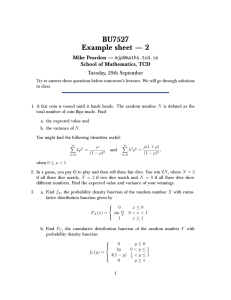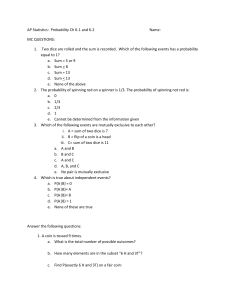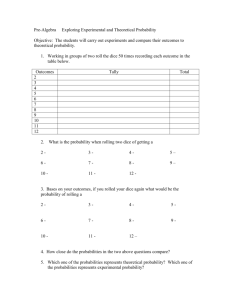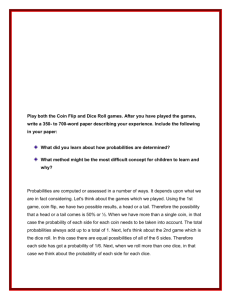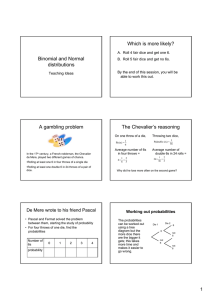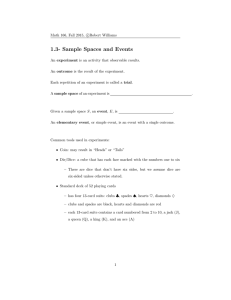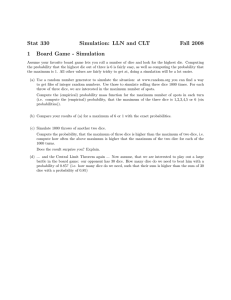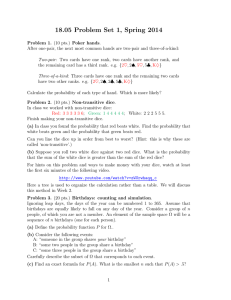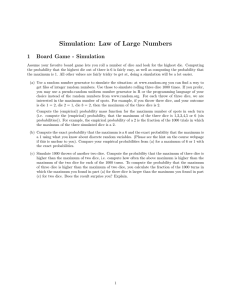BU7527 Example sheet — 2 Mike Peardon — School of Mathematics, TCD
advertisement
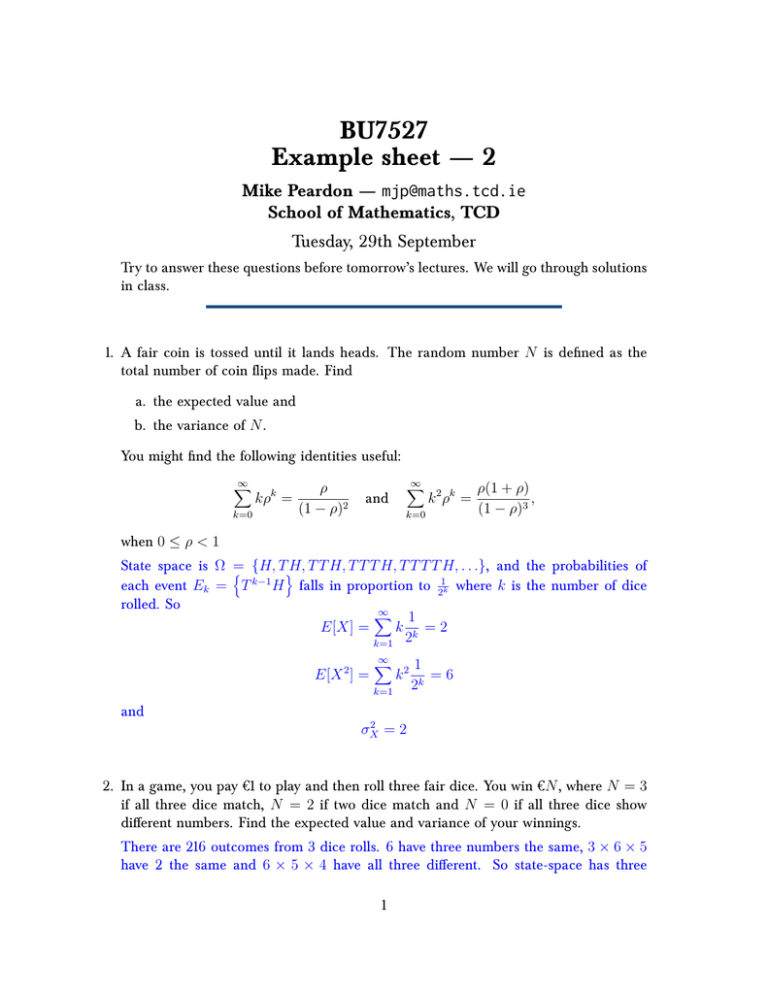
BU7527
Example sheet — 2
Mike Peardon — mjp@maths.tcd.ie
School of Mathematics, TCD
Tuesday, 29th September
Try to answer these questions before tomorrow’s lectures. We will go through solutions
in class.
1. A fair coin is tossed until it lands heads. The random number N is defined as the
total number of coin flips made. Find
a. the expected value and
b. the variance of N .
You might find the following identities useful:
∞
X
ρ
kρ =
(1 − ρ)2
k=0
k
and
∞
X
k 2 ρk =
k=0
ρ(1 + ρ)
,
(1 − ρ)3
when 0 ≤ ρ < 1
State space is Ω =
n {H, ToH, T T H, T T T H, T T T T H, . . .}, and the probabilities of
each event Ek = T k−1 H falls in proportion to 21k where k is the number of dice
rolled. So
∞
X
1
E[X] =
k k =2
k=1 2
E[X 2 ] =
∞
X
k2
k=1
and
1
=6
2k
2
σX
=2
2. In a game, you pay €1 to play and then roll three fair dice. You win €N , where N = 3
if all three dice match, N = 2 if two dice match and N = 0 if all three dice show
different numbers. Find the expected value and variance of your winnings.
There are 216 outcomes from 3 dice rolls. 6 have three numbers the same, 3 × 6 × 5
have 2 the same and 6 × 5 × 4 have all three different. So state-space has three
1
1 15 20
, 36 , 36 }. W is a random number that
outcomes, {O3 , O2 , O0 } with probabilities { 36
takes values W (O0 ) = −1, W (O2 ) = 1 and W (O3 ) = 2. So
E[W ] = W (O0 )P (O0 ) + W (O2 )P (O2 ) + W (O3 )P (O3 )
1
= −
12
and E[W 2 ] = W (O0 )2 P (O0 ) + W (O2 )2 P (O2 ) + W (O3 )2 P (O3 )
39
=
36
155
2
so σW
=
.
144
3.
a. Find fX , the probability density function of the random number X with cumulative distribution function given by
FX (x) =
0
x≤0
0
<
x<1
sin πx
2
1
x≥1
b. Find FY , the cumulative distribution function of the random number Y with
probability density function
0
y≤0
4y
0 < y ≤ 12
fY (y) =
4(1 − y) 12 < y ≤ 1
0
y≥1
Translating between F and f is done by differentiation or integration. So for part 1:
(
fX (x) =
π
2
0
cos πx
2
otherwise
0<x<1
For part 2:
0
y≤0
2
2y
0 < y ≤ 12
fY (y) =
1 − 2(1 − y)2 12 < y ≤ 1
1
y≥1
4. Two random numbers X and Y are both in the range [0, 1] and have a joint pdf given
by
7
fX,Y (x, y) = − (x − y)2
6
2
Find the probability density function of X alone.
This is just obtained by integrating over all possible values of Y . So
fX (x) =
Z 1
0
fX,Y (x, y)dy =
5
+ x − x2
6
5. Two random numbers X and Y have a probability distribution given by
(
fX,Y (x, y) =
k
0
if x2 + y 2 ≤ 1
otherwise
where k is an unknown constant. Are X and Y independent? Find k and then find
the probability P (X 2 + Y 2 < 14 ).
k = π1 , X and Y are not independent and P (X 2 + Y 2 < 1/4) is the ratio of area of
circles of radius 1/2 and 1 so
P (X 2 + Y 2 < 1/4) = 1/4
3
